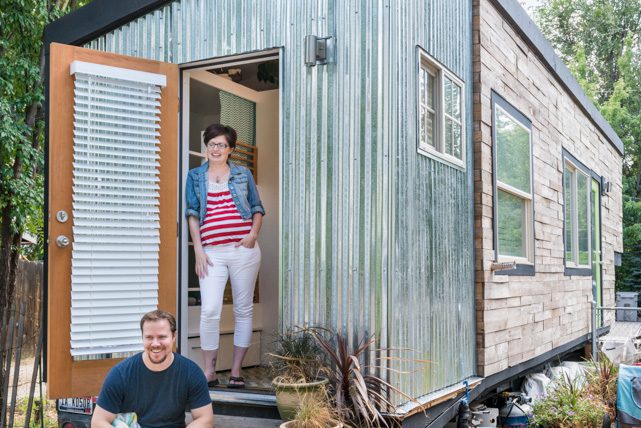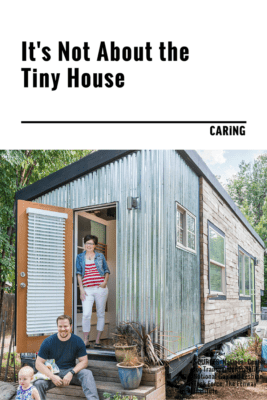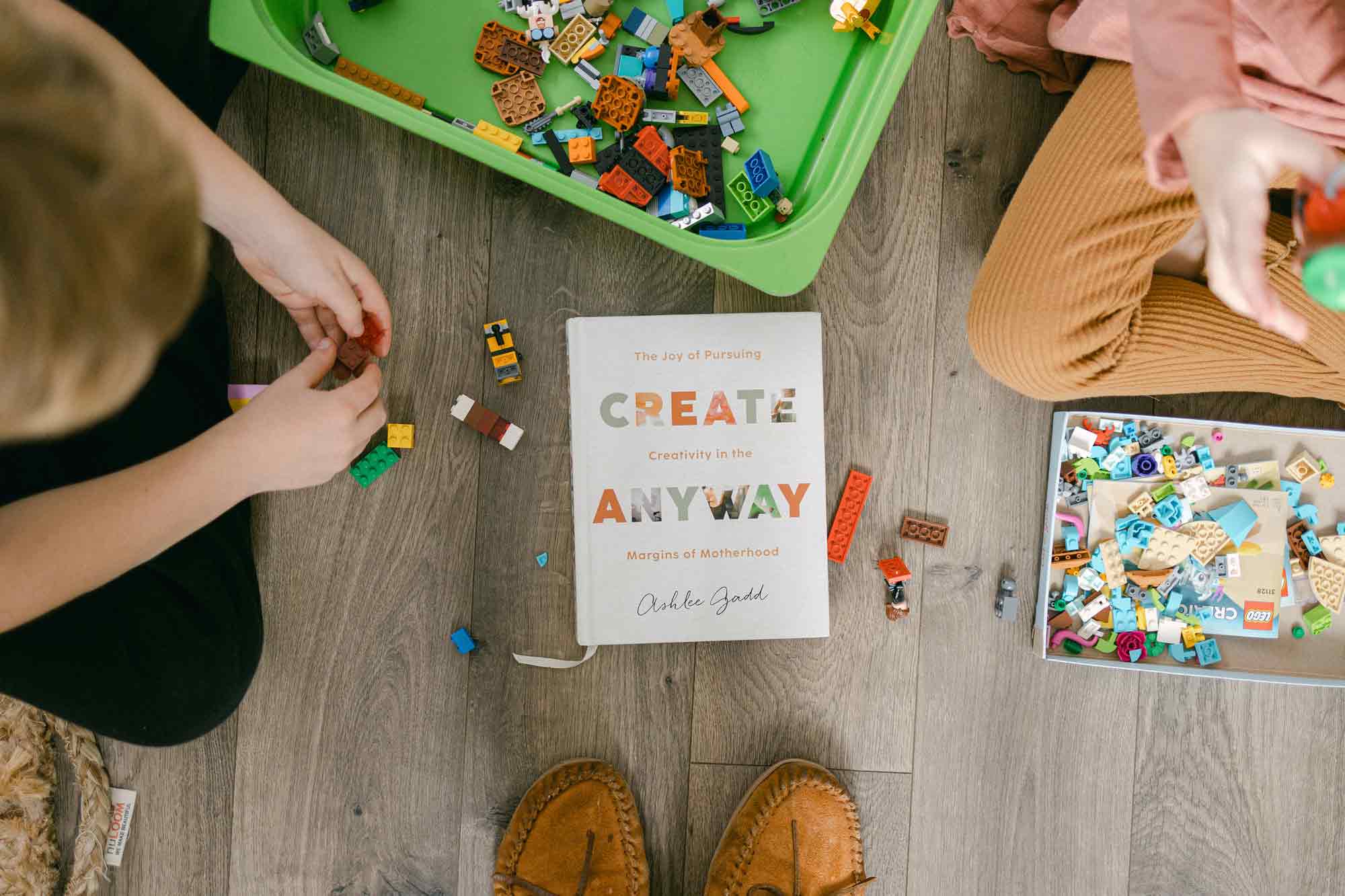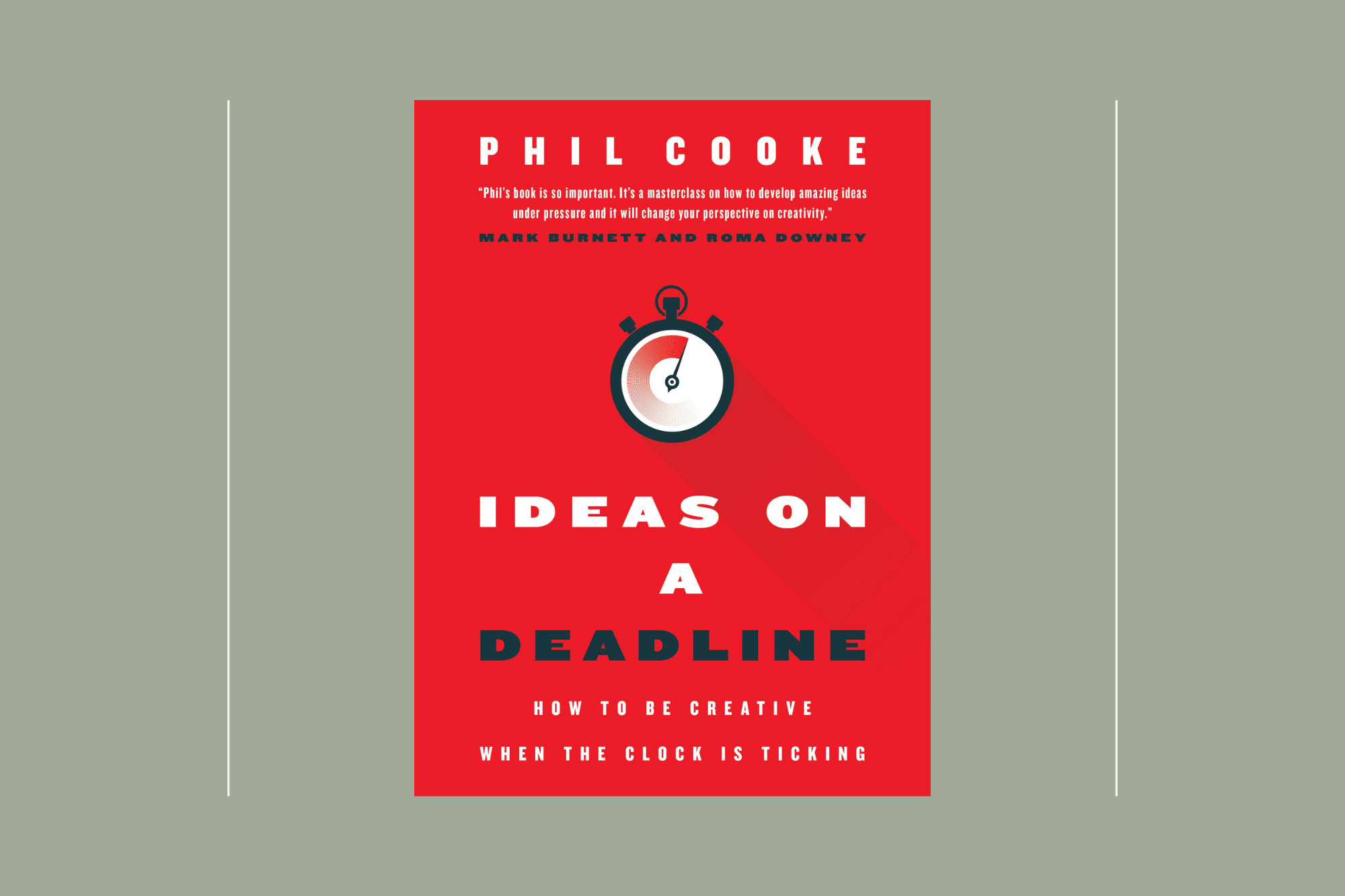Architectural designer Macy Miller downsized her home by 90 percent and lives larger than ever.

For many Americans, one-third to one-half of their income is earmarked for the roof over their heads, and nearly half of Americans are living in a state of “persistent economic security” that makes it “difficult to look beyond immediate needs and plan for a more secure future,” according to a report from the Corporation for Enterprise Development.
Consequently, tiny houses are making headlines.
It’s amazing how many demographics the idea transcends—empty nesters, college students, singles, couples, and families. It is not a new concept, though, as historically houses were much smaller than today. As an architectural designer, I believe there are ways things can be done better and more sustainably, particularly on the residential level. As Americans, we cannot keep up this pace of using more, less effectively. I want to do more with less and teach that to my family and anyone else interested.
After designing, building and occupying my own 196 sq. ft. home, it’s funny how often I find myself explaining that it’s really not about the house—the house is just a possession. It’s all about the lifestyle it enables.
Everyone has their own reasons to minimize and downsize. Mine had to do with creating a lifestyle free of debt, full of learning and creating the flexibility to do what I want with each day.
Barriers when considering a tiny home include legal issues, location issues, technical construction concerns, explaining to loved ones how a single person, let alone a couple or family, can exist in an area roughly equal to the size of the average American’s master bathroom. It certainly won’t work for everyone and it shouldn’t. But if it is right for you, it’s well worth the journey.
Creating your own tiny house is an act of deep introspection. It’s physically demanding, and it’s emotionally taxing figuring out what you need and want from life. Nothing is one-size-fits-all when it comes to tiny homes. Every tiny house is unique because every individual is unique. But living tiny is not about compromising anything. It is about examining what you want from life and making that happen for yourself. It’s doing without all of the excess so that the important parts of life can become central.
Most areas require a minimum square footage of a house be maintained, which is why most tiny houses you see are placed on wheels. This clears them from the building department’s regulations and allows a loophole for smaller dwellings. Even though the houses are on wheels it doesn’t necessarily mean that they are going to be moved often—most don’t move much at all. The legal path of a tiny house classifies it as an RV, but unlike RVs they are built efficiently and for longevity, and can be lived in during all four seasons.
An interesting thing about tiny homes is that they are not designed with “resale value” in mind, like standard housing. Rather, they’re built for living value—right now. They are often tailored specifically to the occupants and therefore less universally valuable.
When I started my own tiny house journey I took it as a challenge. I was committed to taking one year’s worth of rent payments, building a house so I could learn actual construction skills and the specifics about various green technologies first hand, and then live in it for two years so that it could pay for itself. I thought it would be a tough transition from my previous 2,400 sq. ft. home. I was so wrong. It streamlined my life and clarified my path; my important goals—including being debt-free—quickly became realities, and excess complications drifted away. Though the path was challenging, today my priorities have shifted, my worries are few, my wants are minimal and every day I am able to enjoy the gifts given to me in life.
My family has been living tiny for nearly three years. Our home was 196 sq. ft. until July 2015 when we added a small child’s room, bringing our home to 232 sq. ft. When I designed the home it was designed for two adults and a dog with room for growth. Once we had our daughter we didn’t feel the need to expand but with another one coming we felt the time was right to add a room so that we had separate nap areas for the kids. With the new addition we foresee the home meeting all of our needs for at least another three to four years, but it could be longer.
When people ask me what it’s really like I am always at a loss for how to explain it. For us, it is just like living in a non-tiny house, but with more free time and less upkeep. We have everything we need and want; we just don’t have all the extra space that usually comes with traditional housing.
Living tiny is certainly not for everyone, but we have always been pretty minimalistic. We enjoy traveling, spending time outdoors and working on our hobbies. What is different than a standard house is that our monthly expenses went from upward of $4,000 a month to around $400. That provided us the opportunity to become debt-free very quickly, paying off student loans, car loans and credit debt. Further, it has provided the ability to be selective about how we earn our income since we don’t need to earn as much. We are able to work on only projects we love and spend more time being present with our family.
I couldn’t dream of a better situation for our lives.
[Tweet “Architectural designer Macy Miller downsized her home by 90 percent and lives larger than ever.”]













